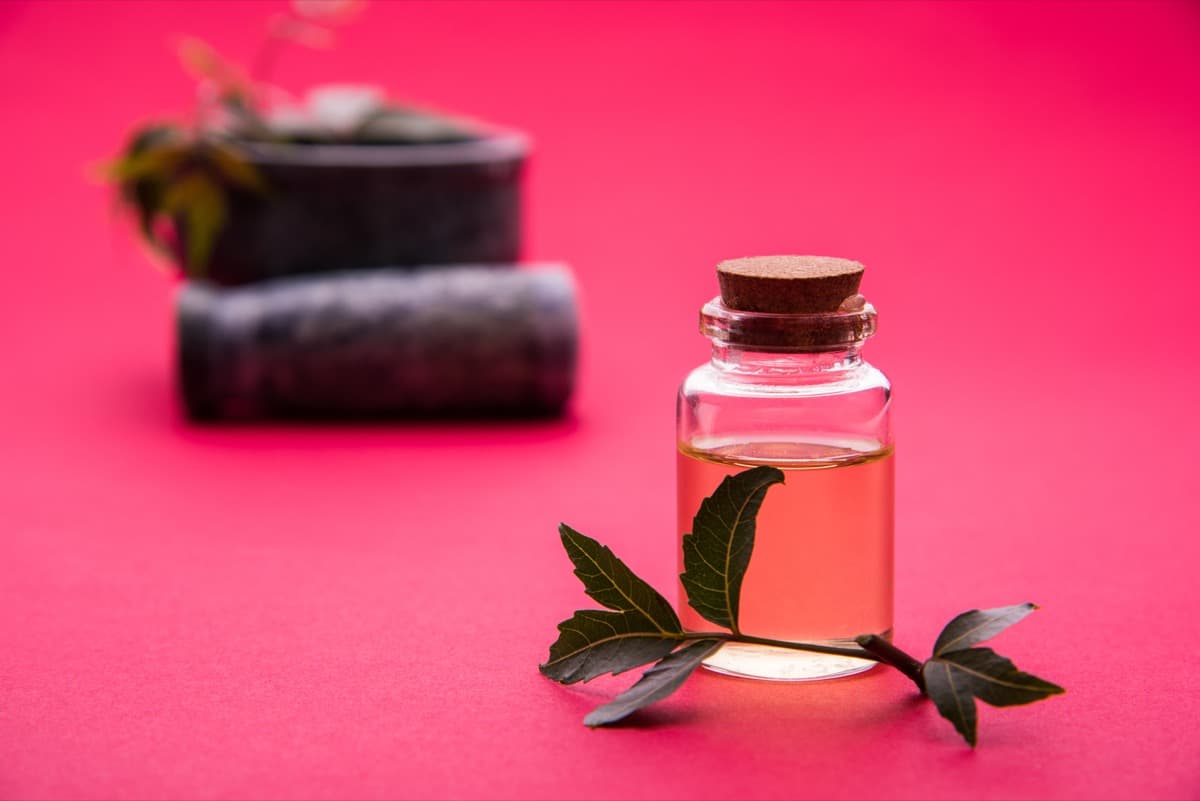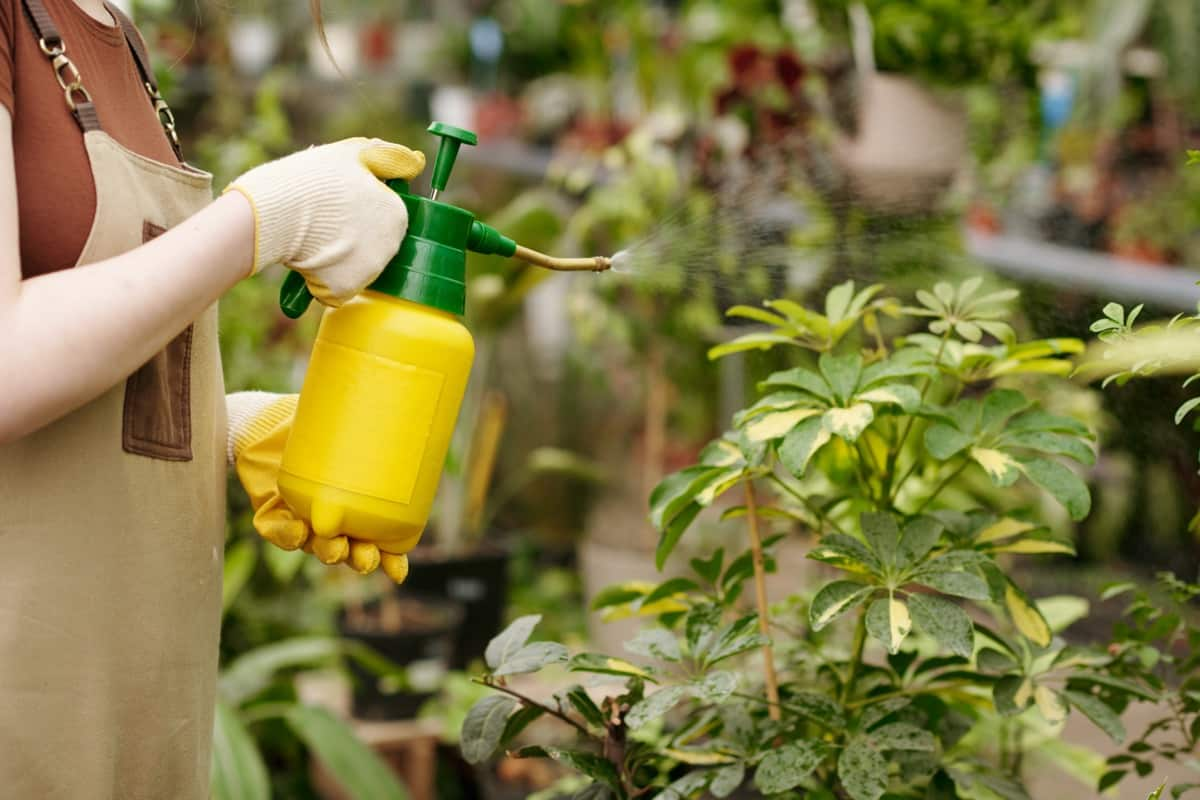Neem oil is a powerful natural remedy often used in organic gardening. Neem oil is an ideal natural insecticide and fungicide that every gardener has in their toolkit. It is a powerful natural insecticide that can be used to control a variety of plants. It has been used for centuries to combat various pests, including beetles, aphids, and mites. Based on the Environmental Protection Agency (EPA), it is safe to use around plants. Other neem oil products include insect-repellent essential oil compounds and neem cake, a type of soil amendment.

Ways to use neem oil in plants
Should you water plants after spraying neem oil?
Watering plants after spraying neem oil should be done only if the plant is wilting or the leaves have a yellow tinge. If these signs are present, it is time to water your plants. However, if the plant does not seem to be wilting or the leaves only have a slight yellow tinge, then there is no need to water the plant after spraying neem oil.
When to use neem oil on plants?
- It can be used to repel pests and get rid of existing pests. Use neem oil carefully in the morning and evening.
- Do not apply neem oil in the middle of the day, as direct sunlight and neem oil together can burn the plants.
- Neem oil works during the growing season because it can kill insects at every stage, including when they are eggs, larvae, pupae, and adults.
In case you missed it: Neem Cake Fertilizer, Uses, Application, Benefits

Neem oil uses in hydroponic plants
It is a natural insecticide and fungicide. It can be used on indoor and outdoor plants. It is also effective against bacteria, molds, and fungi. Neem oil is safe for most plants but should not be used on roses or other flowering plants. The oil can damage the leaves of these plants if it gets into the plant’s water supply.
To use neem oil in hydroponic gardens, fill a spray bottle with water and add one or two drops of neem oil. Mist the plant around the base of the stem with the droplets from the bottle. Use a cloth to cover the foliage if desired. Neem oil will remain active for up to two weeks on most plants.
How does neem oil work?
Neem oil, applied as a leaf shine or foliar spray, is particularly valuable for indoor and hydroponic growers. The spray protects against fungus and other leaf diseases. To use neem oil on plants, dilute it in a spray bottle or watering can with water, then mist the plant’s leaves and stems. Be sure to cover the plant fully with the spray to prevent it from falling off. Neem oil is most effective in the early morning or late evening hours.
Amazing benefits of neem oil for plants
- Neem oil is an effective insecticide and fungicide.
- It can also be used as a natural moisturizer to control pests.
- Neem oil has many uses, including controlling diseases, improving plant growth, repelling insects, and boosting crop production.
- Neem oil can be used as a residual spray on plants to control pests and diseases.
- It can be used as a dust or solution applied to the roots to improve plant growth and vigor.
- It can be mixed with water to make a foliar spray on plants to control fungal infections, aphids, and scale insects.
- Neem is a strong insecticide and herbicide. It helps control weeds and pests.
- It is anti-fungal and anti-bacterial.
- Neem oil can help improve plants’ growth, color, and health.
In case you missed it: Neem Seed Kernel Extract – Procedure and Preparation

Which plants do not like neem oil?
It should not be used on certain plants such as Basil, Caraway, Cayenne, Dill, Marjoram, Oregano, Parsley, Thyme, Roses, Onions, Lilies, and Morning Glory Vines. Also, spraying neem oil on plants with delicate leaves like Lettuce, Peas, Arugula, and Spinach should be done with caution as it can cause foliage burns.
How to use neem oil for fungal and virus control?
Neem oil is one of the most popular fungal and virus-control oils. It has various applications, from controlling fungal diseases on plants to preventing or treating viruses. To use neem oil as a fungicide, apply it to the leaves or fruit of the plants you want to protect. To use neem oil as a virus inhibitor, mix it with water and spray it onto plants or surfaces where viruses are suspected. Always follow the manufacturer’s instructions when using neem oil, as its concentration and application method can vary significantly.
Tips for using neem oil to protect plants from pests
- Dilute neem oil according to the instructions on the bottle. For most plants, one teaspoon per gallon of water is ideal. However, remember that different plants respond differently to neem oil, so test a small area before applying it broadly to a whole plant.
- Pour the diluted neem oil onto the plant’s soil surface or directly onto it. Be sure not to get any on your hands or clothes; apply gloves if necessary.
- Monitor your plants for any changeover time- usually within 24 hours, there will be visible signs that the neem oil is working its magic- such as less aphids, mites, or fungus growth on plants. If there are no changes after 48 hours, increase the dosage by adding more diluted neem oil or using a stronger concentration.
- Make sure the oil is fresh. Old or expired neem oil can be ineffective and even harmful to plants.
- Choose the right type of plant; some plants are particularly sensitive to neem oil toxicity, so be sure to test a small portion before using it on a large area.
- If necessary, repeat the application of neem oil every three weeks or so to maintain protection against pests and diseases in your garden or tree nursery.
In case you missed it: Neem Oil Extraction Methods, Process

What is the neem oil to the water ratio for plants?
It is best to use 5 ml (1 teaspoon) of neem oil for 1 liter of warm water.
What happens if you spray too much neem oil on plants?
If applied excessively, neem oil can damage indoor plants by coating them in a thin oil layer and thus narrowing their leaf pores, which are important for photosynthesis, transpiration, and oxygen release. Neem oil can also cause plants to burn if applied at the wrong time of day.
Applications of neem oil in agriculture
Use against pest infestation: Spray the solution to cover the top and underside of affected leaves. Next, get the spray into all the little nooks to ensure that the plant surface is entirely covered with the solution. Repeat daily till the infestation stops and the bugs are gone.
Use as soil drench: To prevent root rot disease, pour the solution onto the soil around the plant to soak completely. Repeat after 2 weeks. The main step is to gather the necessary ingredients. You will need neem oil, water, and a container. Next, mix the neem oil and water until you have a smooth consistency.
Once the mixture is ready, pour it into the container and wait until it has soaked into the soil. After soaking in, you will want to apply the solution generously to your plants’ roots. Be sure to cover all of them evenly. Finally, wait until the treatment has worked through your plants’ systems before removing any solutions or taking care of other maintenance tasks.
Use to maintain good plant health: Spray all plants with a neem oil once a month. This will help repel any pests and ensure good health.
Use neem oil as a foliar spray: It is a natural insecticide used as a foliar spray on plants. It is used as a foliar spray; ensure you have the right container and equipment. You must mix neem oil with water before applying it to the plants. To apply neem oil as a foliar spray, ensure you have the right container and equipment. You must mix neem oil with water before applying it to the plants.
In case you missed it: Neem Uses in Organic Farming Information

To prepare the container for spraying, fill it halfway with water and then place it in the sun or under a light until hot. This will help transfer heat from the water to the neem oil, making it more volatile. Next, pour enough water into the container so that when you add the neem oil, it is well submerged but not so much that it overflows. Next, add enough neem oil solution to cover your plants’ foliage evenly.
How to mix neem oil spray for plant growth?
- To make your own neem oil insect repellent spray, you’ll need a spray bottle, liquid soap, cold-pressed neem oil, and a gallon of water.
- Mix water and a small amount of soap. Next, mix one gallon of warm water with one teaspoon of liquid soap. This will act as an emulsifier to help mix the neem oil.
- After that, add one to two tablespoons of neem oil. Apply the neem oil mixture to a small area of your plants using a foliar spray bottle. Allow 24 hours. If the mixture does not cause damage, thoroughly rinse your indoor and outdoor plants, and spray directly on the leaves.
- Apply neem oil every two weeks as a preventive measure. If you are trying to control a pest infestation, spray your plants with neem oil once a week.
Ways to use neem oil in plants
There are different ways to use neem oil on plants. One way is to make a foliar application to the leaves. You can also make a soil application or use it for seed treatment. Here are some other ways you can use neem oil on plants:
- To Treat Plant Disease: Neem oil can treat plant diseases, such as mildew, aphids, and blights. Mix a few neem oil drops with water and spray the solution onto the affected area of the plant.
- To Repel Insects: Mix 1-3 tablespoons of neem oil with water and spray the solution onto your plants or around your home for protection against insects.
- To Increase Flowering: Add 2-4 teaspoons of neem oil per gallon of water to your garden pots and allow the plants to soak up the mixture overnight before planting. This will help increase flowering and yield in your plants.
- To Control Weeds: Pour a little bit of neem oil into each hole you make in your garden soil before planting to discourage weed growth.
Does neem oil work on all pests?
It is effective against some common and difficult-to-control insects and pests gardeners face. Neem oil controls several diseases, such as the Colorado potato beetle, Mexican corn beetle, spotted cucumber beetle, whitefly, corn earworm, flea beetle, and cabbage looper. Neem Oil controls fungal diseases like insects and mites on plants and fungal diseases including powdery mildew, black spot, downy mildew, anthracnose, rust, leaf spot, botrytis, needle rust, scab and flower, twig and tip blight, and alternative. Other insects it can kill include fungus gnats, thrips, Japanese beetles, and mealybugs.
In case you missed it: Neem Cultivation and Its Importance

Conclusion
It is a natural insecticide and repellent derived from the neem tree’s seeds. It has been used in India for centuries to control pests and diseases in crops, trees, and gardens. Neem oil is one of nature’s best ways to deal with problem pests; it is pressed from an evergreen tree’s fruits, seeds, and bark.
- Types of Pesticides Used in Agriculture: A Beginner’s Guide
- Economical Aquaculture: A Guide to Low-Budget Fish Farming
- 15 Common Planting Errors That Can Doom Your Fruit Trees
- How to Make Houseplants Bushy: Effective Tips and Ideas
- Innovative Strategies for Boosting Coconut Pollination and Yield
- Pollination Strategies for Maximum Pumpkin Yield
- The Complete Guide to Chicken Fattening: Strategies for Maximum Growth
- Natural Solutions for Tulip Problems: 100% Effective Remedies for Leaf and Bulb-Related Issues
- Revolutionizing Citrus Preservation: Towards a Healthier, Greener Future
- Natural Solutions for Peony Leaf and Flower Problems: 100% Effective Remedies
- Maximizing Profits with Avocado Contract Farming in India: A Comprehensive Guide
- Natural Solutions for Hydrangea Problems: 100% Effective Remedies for Leaf and Flowers
- The Ultimate Guide to Choosing the Perfect Foliage Friend: Bringing Life Indoors
- From Sunlight to Sustainability: 15 Ways to Use Solar Technology in Agriculture
- The Ultimate Guide to Dong Tao Chicken: Exploring from History to Raising
- The Eco-Friendly Makeover: How to Convert Your Unused Swimming Pool into a Fish Pond
- Mastering the Art of Delaware Chicken Farming: Essentials for Healthy Backyard Flocks
- 20 Best Homemade Fertilizers for Money Plant: DIY Recipes and Application Methods
- How to Craft a Comprehensive Free-Range Chicken Farming Business Plan
- Brighten Your Flock: Raising Easter Egger Chickens for Beauty and Bounty
- How to Optimize Your Poultry Egg Farm Business Plan with These Strategies
- Subsidy for Spirulina Cultivation: How Indian Government Schemes Encouraging Spirulina Farmers
- Ultimate Guide to Raising Dominique Chickens: Breeding, Feeding, Egg-Production, and Care
- Mastering the Art of Raising Jersey Giant Chickens: Care, Feeding, and More
- Ultimate Guide to Raising Legbar Chickens: Breeding, Farming Practices, Diet, Egg-Production
- How to Raise Welsummer Chickens: A Comprehensive Guide for Beginners
- How to Protect Indoor Plants in Winter: A Comprehensive Guide
- Ultimate Guide to Grow Bag Gardening: Tips, Tricks, and Planting Ideas for Urban Gardeners
- Guide to Lotus Cultivation: How to Propagate, Plant, Grow, Care, Cost, and Profit
- Agriculture Drone Subsidy Scheme: Government Kisan Subsidy, License, and How to Apply Online
- Ultimate Guide to Raising Araucana Chickens: Breed Profile, Farming Economics, Diet, and Care
- Bringing Hydroponics to Classroom: Importance, Benefits of Learning for School Students
- Ultimate Guide to Raising Polish Chickens: Breed Profile, Farming Economics, Diet, and Care
- Ultimate Guide to Raising Australorp Chickens: Profile, Farming Economics, Egg Production, Diet, and Care
- Silkie Chicken Farming: Raising Practices, Varieties, Egg Production, Diet, and Care
- Sussex Chicken Farming: Raising Practices, Varieties, Egg Production, Diet and Care